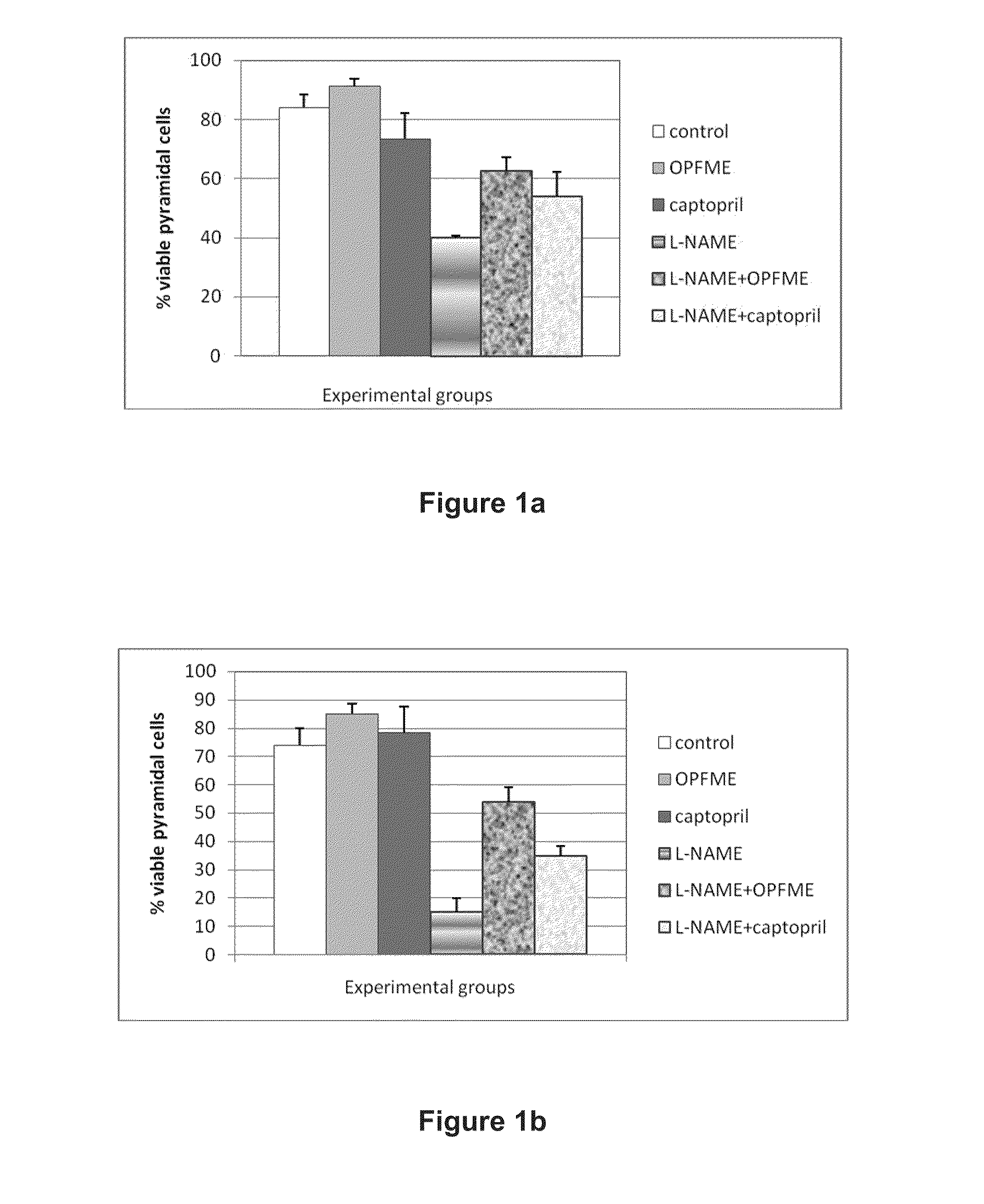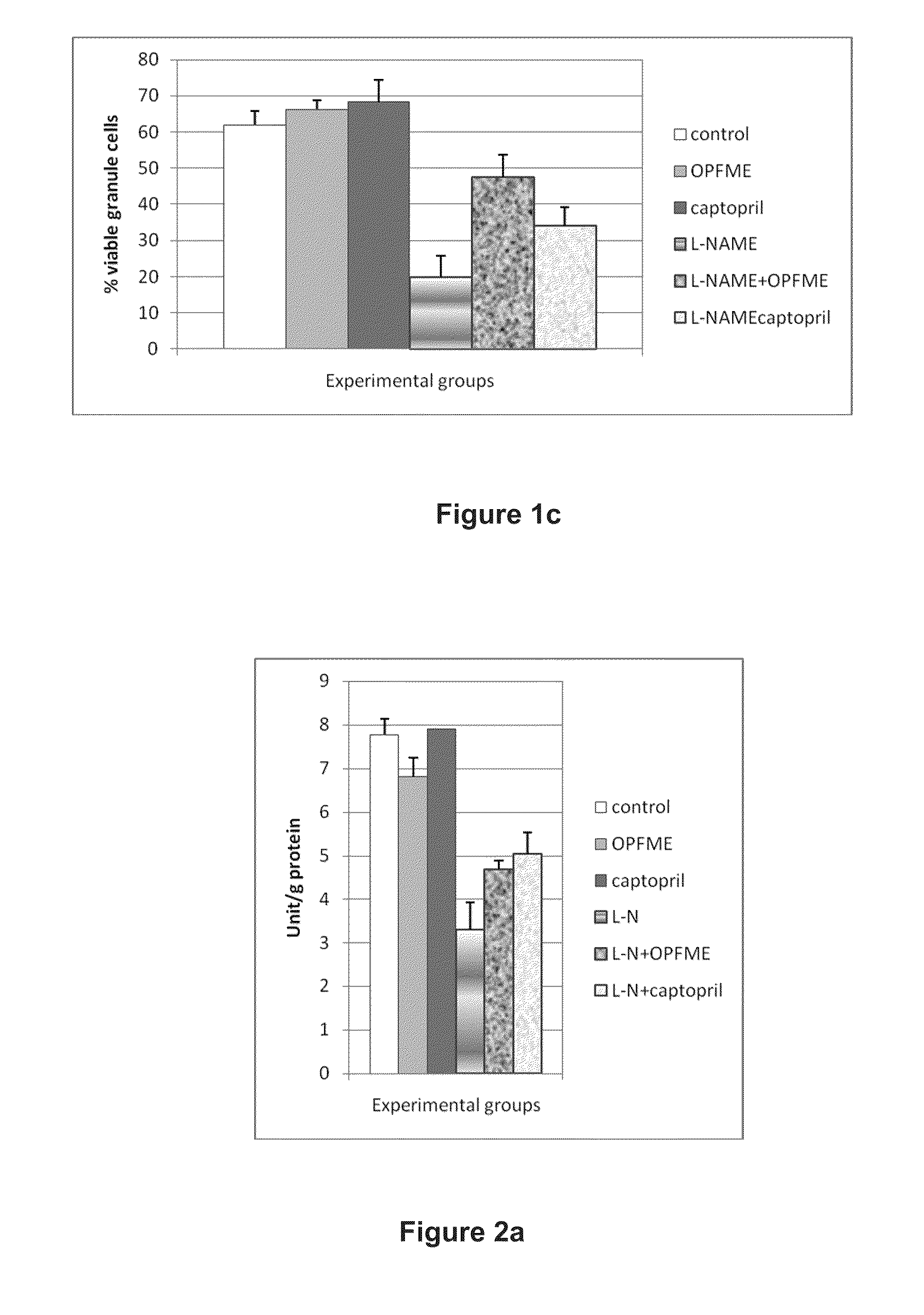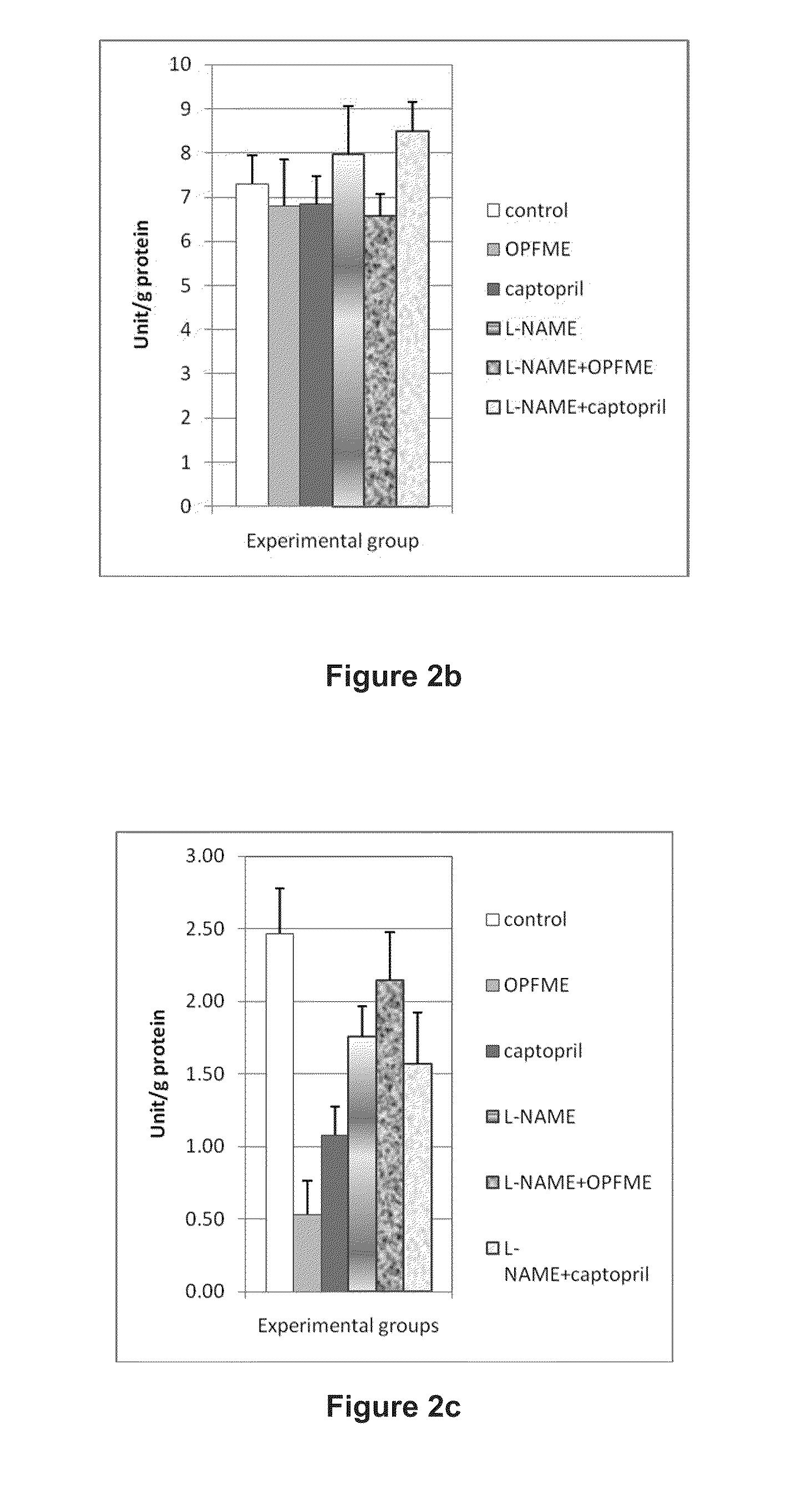Use of a Neuroprotective Extract and Pharmaceutical Preparation Thereof
- Summary
- Abstract
- Description
- Claims
- Application Information
AI Technical Summary
Benefits of technology
Problems solved by technology
Method used
Image
Examples
example 1
[0037]Vegetative parts of the palm leaves were collected, cleaned, washed and cut into small pieces and oven-dried at 40° C. overnight. The dried material was ground using a blender and extracted three times with alcohol (1:10 v / v) and three times with hot or warm water or with mixtures of water, acetone, chloroform and alcohol.
[0038]Other solvents may be used as a medium for the extraction. This extraction process is designed to separate soluble compounds by diffusion from a solid matrix (i.e. plant tissue) using a liquid matrix (solvent). Alcohol, water, chloroform and acetone can be used to produce a desired yield in extracting the active components. The extraction was performed in a few minutes. The pooled extracts were vacuum-dried at 40° C. and stored until further use. The amount of extract obtained from the vegetative dried materials ranged from 1 to 40% by weight.
example 2
Neuroprotective Activities of Palm Leaves Extract
[0039]Neuroprotective activities of polyphenol-rich palm leaves extract and captopril were evaluated in normal and nitric oxide (NO) deficient rats by assessing neuron viability of three subfields in the hippocampus; CA1. CA3 and DG. L-NAME administration significantly reduced the number of viable pyramidal cells in CA1 to 40% (see FIG. 1a) and treatment with palm leaves extract in these rats significantly attenuated neurodegeneration, to values of 62% (p=0.000). Captopril showed partial neuroprotection in this region as the viable pyramidal cell count was lower than that of palm leaves extract. There was no dramatic neuron loss in all normal rats and treatment with palm leaves extract or captopril caused no significant change in viable pyramidal cell count compared to control, although in captopril group viability was slightly less.
[0040]The CA3 region was observed to be more affected by L-NAME than CA1 region as 85% of the pyramidal...
example 3
Antioxidative Properties of Palm Leaves Extract
[0043]FIG. 2a shows L-NAME administration decreased superoxide dismutase (SOD) activity but this effect was attenuated significantly by palm leaves extract or captopril treatment (p=0,000). Palm leaves extract and captopril both increased superoxide dismutase (SOD) activities by 42% and 51% respectively when compared with L-NAME treated animals. All 3 groups of normal brain rats have similar superoxide dismutase (SOD) activities. Glutathione peroxidase (GPx) activity was not affected by the compromised nitric oxide (NO) environment as there was insignificant difference between all normal and all nitric oxide (NO) deficient groups (see FIG. 2b). FIG. 2c shows that catalase activity is depleted significantly in palm leaves extract or captopril treated normal rat group compared to control (p=0.033). In all nitric oxide (NO) deficient groups, catalase activities were slightly lowered without any statistical significance when compared to con...
PUM
| Property | Measurement | Unit |
|---|---|---|
| Fraction | aaaaa | aaaaa |
| Fraction | aaaaa | aaaaa |
| Fraction | aaaaa | aaaaa |
Abstract
Description
Claims
Application Information
 Login to View More
Login to View More - R&D
- Intellectual Property
- Life Sciences
- Materials
- Tech Scout
- Unparalleled Data Quality
- Higher Quality Content
- 60% Fewer Hallucinations
Browse by: Latest US Patents, China's latest patents, Technical Efficacy Thesaurus, Application Domain, Technology Topic, Popular Technical Reports.
© 2025 PatSnap. All rights reserved.Legal|Privacy policy|Modern Slavery Act Transparency Statement|Sitemap|About US| Contact US: help@patsnap.com



